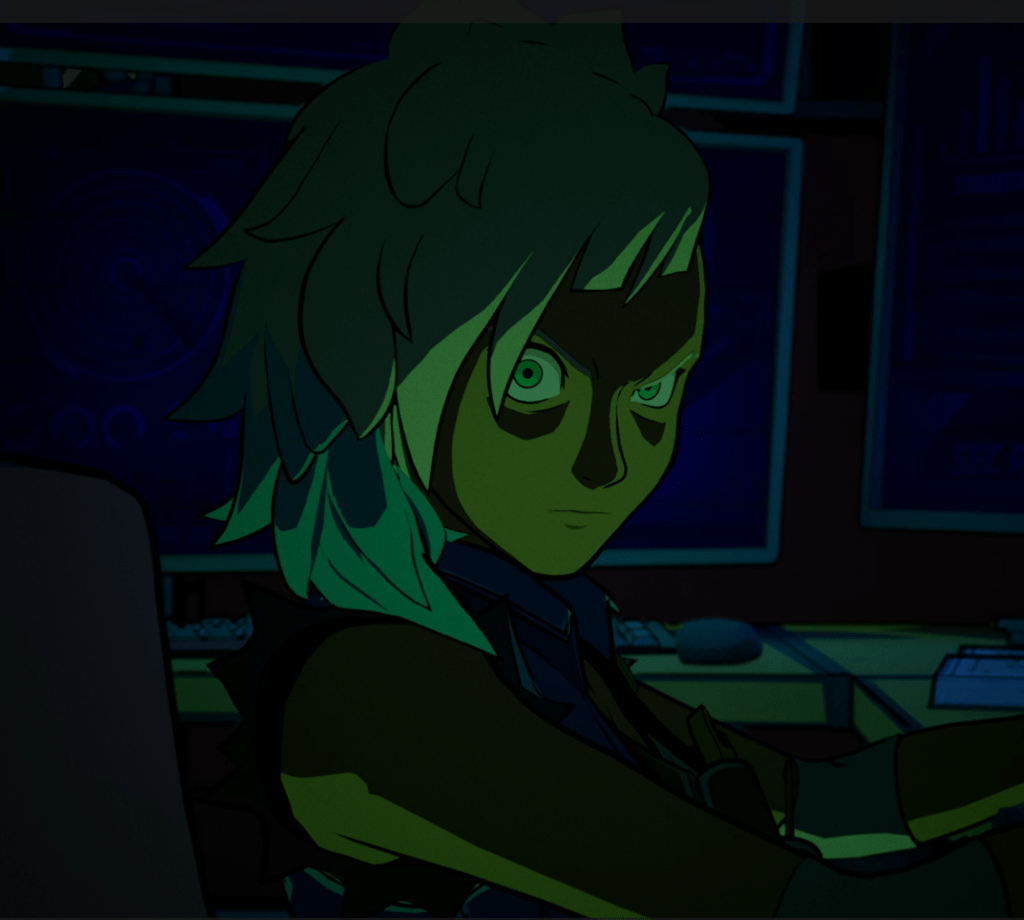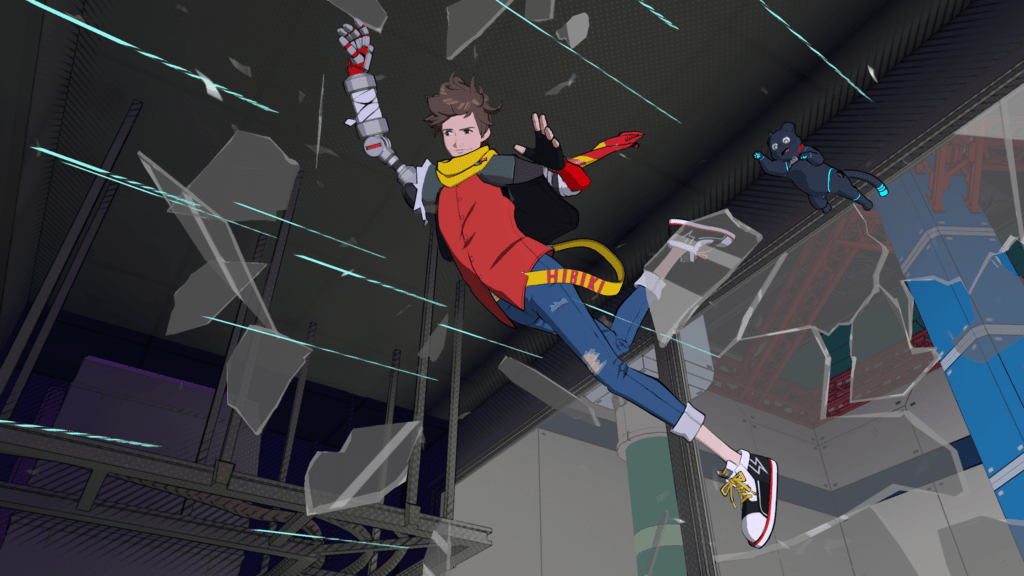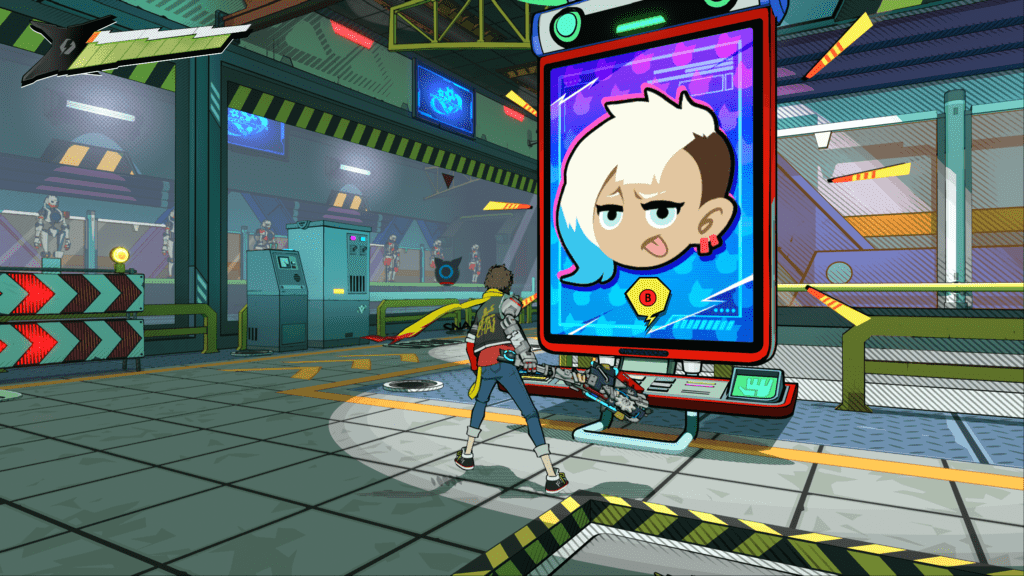You'll love it if:
- You're looking for a hand-crafted linear experience.
- You haven't had a good rhythm game in a while.
- Hack-and-slash, combo-based gameplay is what you want.
- You're searching for a new playlist to favourite on Spotify.
Not for you if:
- You want a dark and gritty world.
- Spending hundreds of hours grinding in a videogame fills that void in your heart.
- There really are no reasons why you shouldn't want to play this game.
I have to be honest; things aren’t looking good in the video game world. I mean, we were used to the occasional botched release and disappointing product, but the exceptions seem to have become the rule. You can hear it in the voice of people who truly love this medium when it comes to new IPs. Phrases like “Looks ok, but I hope it won’t be broken on release.” and “It’s another AAA game from that company… don’t expect originality.” can be heard everywhere from loyal fans of the industry. Over-hyping and aggressive monetisation have turned a once creative and dedicated wide variety of gamers into jaded shadows of their former selves. The worst part of it all… they’re right. Many companies have completely shed their disguise as creative entities and now unapologetically just go for your money. Something that used to be art with marketing and business elements has turned into a marketing business with art elements.

So why am I so sourly bitching about the industry right now? Because in a sea of mediocrity, brilliance shines oh so ever brighter. And Hi-Fi Rush is just that… brilliant. From the studio that brought you The Evil Within series and Ghost Wire Tokyo comes a rhythm-based action game. Huh? Tango Gameworks are veterans of the horror genre; why would they ever make something like that? What do you mean it was announced and released on the same day? Don’t these people understand that without obscene amounts of marketing the consumers won’t overlook technical problems and mediocre gameplay on release? It’s almost as if they think that a good game will shine just on the fact that it’s entertaining, polished and competent. Madmen! Madmen, I say! Wait, what? Oh…it’s all of those.
Hi-Fi Rush Review TL;DR
Tango Gameworks’ decision to take a break from their horror roots has created a miracle. Hi-Fi Rush is an incredibly polished game that has what a 195.65 billion dollars industry forgot is essential for a creative product: a soul. With vibrant visuals, an ungodly good soundscape, and gameplay that slaps harder than a cheating wife, Hi-Fi Rush can easily be considered one of the contenders for a 2023 G.O.T.Y. award.

Story: The hero we need, but don’t deserve.
Chai has dreams. Dreams of life on a stage being adored by thousands for his awesome Rock. Unfortunately, Chai’s right arm doesn’t work, that fact deters our main protagonist from following his desire. Or so it would if Chai wasn’t a man of focus, commitment, and sheer fucking will. The solution? Project Armstrong! A trial cybernetic limb replacement project that promises to make you into an improved version of yourself after it’s done. But, as we all know, no one really reads the fine print, do they?
Through a series of accidental events, Chai gets his new cybernetic arm but also something extra attached to him. His music player. With his playlist literally beating in his chest cavity, he still finds himself hopeful about the future despite this small accident. Though, this comes to a stop when Vandeley security, the company behind Project Armstrong, notifies him of one very small detail. You see, Chai’s cybernetic augmentation, although successful, wasn’t done up to the company’s code, because of the music player in his chest. That fact, by extent, makes Chai technically a defect. And unfortunately, Vandeley has a zero-defect policy.

So, Chai must run, make new friends along the way, uncover a whole new corporate conspiracy, and crush the dreams of a megalomaniac CEO before he causes irreparable damage. While, most importantly, still enjoying the music beat that this wonderful world has to offer.
Graphics: You stop, you die!
Hi-Fi Rush’s world is visually intricate and unique. The one word that comes to mind when you first play the game is “pulsating”. I do realise that sounds weird but stay with me for a bit. You see, Hi-Fi Rush is a rhythm game, and a good one at that. The difference is that the beat is not just part of a bar that you have to keep your attention on but exists in every single element of the environment. The background, the UI, everything moves and follows the beat. The world is literally pulsating with the music. As a result, the level of the player’s immersion reaches somewhere above the goddamn stratosphere. This helps you not just to be “in the zone” once in a while… it enables you to become a permanent resident in it.

Trying to hit an attack and can’t really make out the beat? No, problem! Just watch how the containers move through the assembly line in the background, and you’re golden. Missing the flow of the game becomes very difficult after all when it is integrated into every visual element you see. This is a mechanic that’s also visually enhanced naturally by the pallet of the game.
Hi-Fi Rush is breathtakingly vibrant. The world exudes energy, movement, and liveliness. The colour pallet of the game is extremely saturated, reminding you of a Saturday morning cartoon in more ways than one. Because of the constant movement of the scenes and characters, sometimes there is also a hint of the Rubber Hose animation style minus the curves, of course, giving the game another layer of movement fluidity.


And, speaking of fluidity, we have to mention one of the game’s biggest visual highlights, scene transitions. Where Spider-Man: Miles Morales’s transitions were, for example, seamless, Hi-Fi Rush treats them as canvases for different styles. The game enjoys being playful with them and trying different things every time. From animation straight to gameplay using a window break or even changing cartoon styles mid flight and the character breaking through five walls. Never once did I feel that game abruptly pause after a cinematic.
If the somewhat anime aesthetics make your animation sense go tingling, check out this article about the anime release winter season by Romy Vermeeren!
Gameplay: On the beat, they get hit!
Since we established that the game looks incredible, what about the gameplay? Well, I have good news for you people… it’s great! Hi-Fi Rush employs a system of rhythm-based, hack-and-slash, third-person combat. Everything in the world moves on the music beat, including Chai’s attacks, enemy movements and general combat mechanics like dodging. Now you would ask me, “Jason, since everything moves to the beat by itself, what’s the point of timely inputs?”. At which, I would first scream, being naked in my shower and you trespassing, and then answer you by explaining that on-beat actions have an insane amount of boosted damage and effects. Long story short, if you want massive damage and to feel like a god, then being accurate is essential.
Though that isn’t the only challenge the gameplay provides. Hi-Fi Rush’s combat is easy to learn but difficult to master. I mean, sure, every bozo can hit a light attack button four times, but chaining that to an aerial combo with different inputs that transition to another one while always staying on the beat takes practice and skill to master. Thankfully the game doesn’t burden you from the start with an insurmountable amount of combos.

This is where Peppermint comes in. Chai’s friend and also the only way to become stronger at the beginning of the game, Peppermint can provide our beloved doofus with numerous combos and stats upgrades, for a price. While going through the Vandeley grounds like a wrecking ball, Chai acquires the game’s currency, also known as Scrap. Scrap can be used not only for buying new combos but also for unlocking special companion moves and acquiring chips that boost specific stats or mechanics of the game. Want omnidirectional parry attacks that produce health on success? Worry not, the chips have you covered. They can also be used for buying extra health or reverb gauges in case the player finds the game a bit too challenging.
But what is a reverb gauge? While playing the game and engaging in combat, Chai acquires a resource called reverb power that can be consumed to use Special attack moves, and the truth is… they are incredible! I haven’t played a game in such a long time that likes to have so much fun with itself like Hi-Fi Rush. Every single special move is unique and has its own coolness factor. Most of them have their own cinematic sequence, which is amazing from a presentational standpoint but extremely labouring from a design one. What I mean is that the developers didn’t have to make every move feel so special and cool. They went out of their way to do it. And that makes them feel all the more awesome to perform.
Last but not least, platforming is a vital element of the game. Moving platforms, hazards, and other puzzles are used as obstacles for the player, so they may have to work hard to find the hidden upgrades. With this as an incentive, Hi-Fi Rush encourages you to search around the levels and experience the beautiful aesthetics this game has to offer. However, even platforming requires rhythm input skills when it comes to traversal elements. The obstacles move and displace themselves on the beat, while other hazards need follower minigames. It’s simple: follow the beat, dodge everything perfectly and feel like a god or mistime your dodge and get smacked by every single laser beam that comes your way.

Sound: No clever title, it’s incredible!
Visuals? Vibrant and refreshing. Gameplay? Satisfying and entertaining. So, what about the sound? haha…hahaha…HAHAHAHAHA! Crazy how a G.O.T.Y. contender can be released in a day, no? Using my years of knowledge concerning the video game industry, I shall craft you an opinion so concise and to-the-point that the world may marvel at my eloquence. Hi-Fi Rush is the shit. With 21 original feature-length songs and seven licensed ones, I have actual trouble trying to find a flaw with the sound of this game. It just doesn’t stop. Banger after banger slapping you in the face one after the other making you wonder when the high is going to end, and that’s the beauty of this game. It never does.
It’s not just that the soundtrack elevates the game. The soundscape is intricate and interacts with the song by way of environmental sounds and added vocal brushes just at the right moments. A guitar riff enhanced by the sound of metal platforms falling at just the right moment is all but one of the numerous examples you can find during your experience. Small touches like that make Hi-Fi Rush feel as hand-crafted and taken care of as a miniature ship in a bottle giving you a small idea about the passion Tango Gameworks put into this project. The world resonates with the sound and, by extent, with you as a player.

The more we grow up, the more difficult it is to have the same excitement and feelings of wonder as back when we were kids. At least that’s what I thought until I started playing the game in the morning, only to realise that it was three and a half in the night, I had hypertension, the songs kept playing in my head, and I had to go to work in 4 hours. I’m a twenty-seven-year-old man, and listening to the soundtrack of this game takes me back to a time when AAA video game development wasn’t just a study about user retention but a creative risk that studios used to be proud of taking.
Conclusion: Why are you not buying this yet?
Hi-Fi Rush is like an oasis in a desert of mediocrity. Even though it’s new, it feels like it comes from an era when AAA games were a creative vision instead of a rehashed nightmare of overused ideas. The incredibly vibrant visuals, paired with goofy dialogue, make the game feel energetic and unapologetically fun. It knows what it is and wears its style as a badge of honour. A man’s dream of making his favourite playlist into an actual videogame come true. This passion overflowing from every part of the game is what makes it a 10/10 in my book. With around 15 to 20 hours of gameplay, at the price of thirty euros, having THIS level of polish, it is a shame you’re not purchasing it already. Buy it, play it, and be transferred back to a different time when things were brighter and the music a little louder.
I would like to thank AVE Greece that provided me with a copy of the game.





